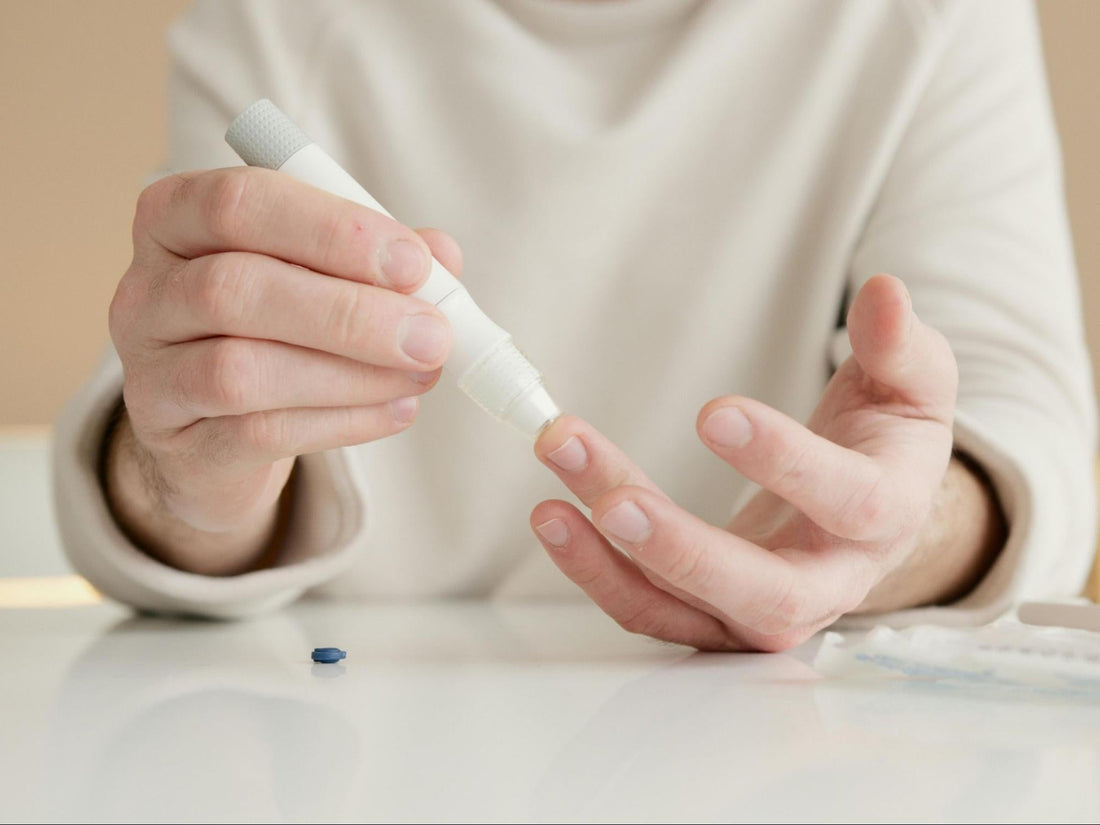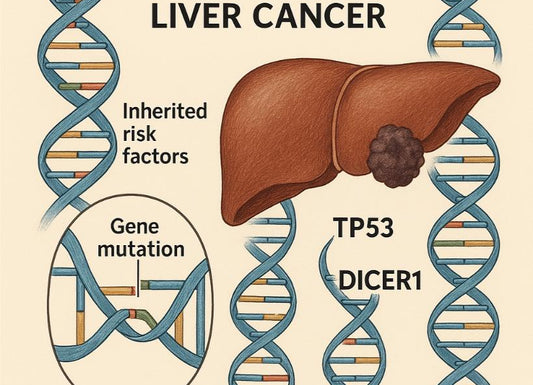Capillary blood glucose: What it means, how it’s measured, and why it matters
 Written By
Abel Tamirat, MD
Written By
Abel Tamirat, MD

If you or a loved one lives with diabetes, you’ve likely seen—or used—a small device that checks blood sugar with a quick finger prick. This simple test measures capillary blood glucose, one of the most widely used methods to track glucose levels outside of a hospital setting.
But what exactly does capillary blood glucose measure? How accurate is it compared to a laboratory blood test? And when is it most useful?
In this article, we’ll explain what capillary blood glucose means, how the test is performed, when it’s recommended, and why it plays such an important role in managing diabetes and overall health.
What is capillary blood glucose?
Capillary blood glucose is the level of glucose found in blood taken from capillaries—tiny blood vessels located just beneath the skin. These vessels are closest to the surface, which is why a small drop of blood from the fingertip is enough to provide a measurement.
This type of test is different from venous blood glucose testing, which requires a vein draw in a clinical setting. Instead, capillary testing is designed to give fast, real-time information about blood sugar levels.
It’s commonly used by people with type 1 or type 2 diabetes to guide daily decisions about food, exercise, and medication.
Blood Sugar Monitoring in Diabetes | Start Checking Your Blood Glucose
How is capillary blood glucose measured?

The most common way to measure capillary blood glucose is with a finger-prick test.
-
The fingertip is cleaned.
-
A lancet makes a small puncture in the skin.
-
A drop of blood is collected on a test strip.
-
The strip is inserted into a glucose meter, which provides a reading within seconds.
More advanced methods, such as continuous glucose monitoring (CGM), measure glucose in the fluid just beneath the skin. These readings closely reflect capillary glucose levels and provide continuous tracking throughout the day.
When is capillary blood glucose testing used?
Capillary glucose testing has a number of practical uses:
-
Diabetes management: People with type 1 diabetes, and many with type 2, rely on it multiple times a day to adjust insulin, food, and activity.
-
Emergency situations: It provides rapid results for suspected low blood sugar (hypoglycemia) or dangerously high blood sugar (hyperglycemia).
-
Screening: In some clinics or community health events, finger-prick testing may be used as a first step before more formal laboratory tests.
-
Home monitoring: For people learning how meals, stress, or exercise affect their body, capillary glucose testing offers immediate feedback.
See Related: Understanding Fasting Glucose Levels: A Comprehensive Guide
Capillary blood glucose versus venous blood glucose
Venous blood glucose is the type of test done in a lab, where blood is drawn from a vein and analyzed with high-precision equipment. This method is considered the gold standard for diagnosing diabetes and related conditions.
Capillary blood glucose is less invasive and more convenient, but small variations occur between the two methods. For example, after meals, capillary glucose levels may run slightly higher than venous levels. Despite these differences, capillary testing is considered accurate enough for daily management of diabetes.
How accurate is capillary blood glucose testing?
Modern glucose meters are highly reliable when used correctly. According to international standards, readings should be within ±15 percent of laboratory values in most situations.
Several factors influence accuracy:
-
Meter quality and calibration
-
Test strip storage and expiration
-
Cleanliness of the fingertip
-
Environmental factors like temperature or altitude
-
Timing—for example, readings after meals may differ slightly from fasting levels
In general, capillary testing is not used for a formal diagnosis, but it is highly effective for ongoing monitoring and treatment adjustments.
See Related: Why Is My Fasting Blood Sugar High but My A1C Is Normal?
Normal ranges for capillary blood glucose

For most adults without diabetes, typical capillary blood glucose values are:
-
Fasting (after at least 8 hours without food): 70–100 mg/dL (3.9–5.6 mmol/L)
-
Before meals: 80–130 mg/dL (4.4–7.2 mmol/L)
-
Two hours after meals: Less than 180 mg/dL (10.0 mmol/L)
Your doctor may recommend slightly different target ranges depending on age, overall health, and whether you have diabetes.
What does it mean if your results are high or low?
-
High blood glucose (hyperglycemia): May occur after eating too many carbohydrates, missing medication, being sick, or experiencing stress. Repeated high results can indicate that treatment adjustments are needed.
-
Low blood glucose (hypoglycemia): May happen if too much insulin or certain medications are taken, meals are skipped, or exercise is intense. Symptoms include shakiness, sweating, confusion, and in severe cases, fainting.
-
Large swings in results: May suggest the need for closer medical evaluation or changes in therapy.
If your readings are consistently out of range, contact your healthcare provider.
See Related: When Is the Best Time to Take Insulin for Type 2 Diabetes?
Pros and cons of capillary blood glucose testing
Benefits:
-
Provides immediate results
-
Allows for self-monitoring at home or on the go
-
Helps guide decisions about food, exercise, and medications
-
Improves safety by alerting to dangerously high or low levels
Limitations:
-
Requires finger pricks, which can be uncomfortable over time
-
Slightly less precise than laboratory blood draws
-
Accuracy can be affected by user technique or external conditions
See Related: Understanding Glucose in Urine: Causes, Symptoms, and Treatment
How often should you check your blood glucose?

The answer depends on your health situation:
-
Type 1 diabetes: Often multiple times per day, or continuous monitoring with a sensor
-
Type 2 diabetes on insulin: Usually at least once or twice daily
-
Type 2 diabetes on oral medications: May not require daily checks, but should follow physician guidance
-
No diabetes: Routine monitoring is generally unnecessary unless recommended by a doctor
Your doctor will provide a testing schedule that matches your treatment plan.
See Related: Blood Sugar Test Kit: A Complete Guide
Final thoughts
Capillary blood glucose testing is one of the most practical tools for managing diabetes and understanding blood sugar health. While it may not always match the precision of laboratory results, it provides fast, actionable information that can improve daily decision-making.
Consistency, proper technique, and high-quality equipment are essential for reliable results. And while capillary testing is invaluable for monitoring, it should always be paired with regular clinical visits and lab work to ensure a complete picture of your health.
Related Resources
References
American Diabetes Association. (2024). Standards of medical care in diabetes—2024. Diabetes Care, 47(Suppl 1), S307–S308. https://doi.org/10.2337/dc24-S017
Centers for Disease Control and Prevention. (2023). Diabetes and blood sugar monitoring. Centers for Disease Control and Prevention. https://www.cdc.gov/diabetes/diabetes-testing/monitoring-blood-sugar.html
Mayo Clinic. (2023). Blood glucose testing: Why, when, and how. Mayo Clinic. https://www.mayoclinic.org/diseases-conditions/diabetes/in-depth/blood-sugar/art-20046628
National Institute of Diabetes and Digestive and Kidney Diseases. (2024). Monitoring diabetes at home. National Institute of Diabetes and Digestive and Kidney Diseases. https://www.niddk.nih.gov/health-information/diabetes/overview/managing-diabetes
World Health Organization. (2022). Guidelines on self-monitoring of blood glucose. World Health Organization. https://www.ncbi.nlm.nih.gov/books/NBK582350/table/ch3.tab5

Dr. Abel Tamirat is a licensed General Practitioner and ECFMG-certified international medical graduate with over three years of experience supporting U.S.-based telehealth and primary care practices. As a freelance medical writer and Virtual Clinical Support Specialist, he blends frontline clinical expertise with a passion for health technology and evidence-based content. He is also a contributor to Continuing Medical Education (CME) programs.



